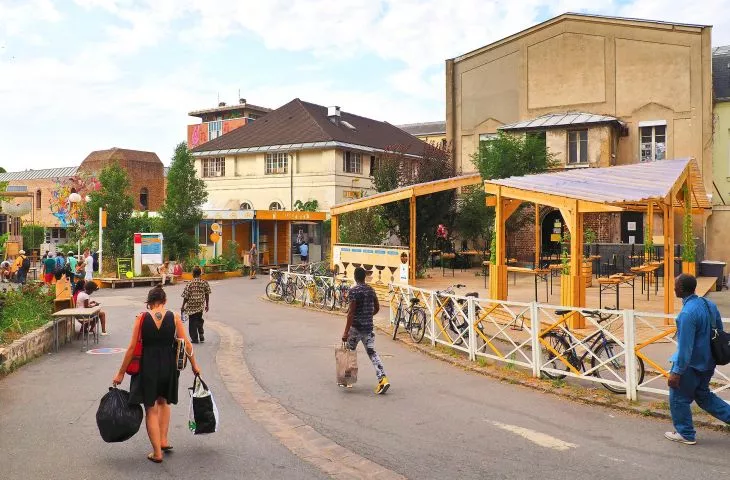"Climate Change Space" is a series of articles on architectural strategies for adapting cities to the climate crisis. Each text will touch on a different issue or function that plazas, parks and streets will have to perform in the near future - from water retention, to providing access to food, to places prepared to welcome climate migrants. Every two weeks, we will look at specific ideas from designers and already implemented solutions for transforming public spaces into a buffer to reduce the negative effects of weather change and provide infrastructure for the crisis.
Partner of the series
Reuse
(Episode 4 of the series titled "Climate Change Space")
As the just-awakening crisis forces economists and politicians to rethink, and economic elites and media outlets such as the Financial Times* begin to speak out loudly about the misguided economic policies of the past forty years and the need to rebuild the welfare state, this reflection must also apply to architecture - a vital tool of speculation whose value as a financial mechanism has in recent years outgrown the basic, utilitarian function it should serve.
* source
And if we think seriously about post-growth( degrowth) and a change in the approach to building, the most natural path seems to be reuse- adapting and giving new life to existing buildings ( reuse architecture).
It is not the structure, but precisely the function of purpose-built buildings that is aging the fastest. Losing attractiveness and profitability, buildings from several decades ago are being abandoned, and the real estate market promotes the thesis that it is cheaper and easier to demolish and build new, rather than adapt older buildings. This approach primarily serves the construction industry, however, the "cheapness" of deconstruction and new construction does not take into account the social and environmental costs, only the economic calculus.
The ease of demolition results in the loss of historically and artistically valuable buildings that are important to local communities, while the environment is burdened with tons of waste and the negative effects of the production of new building components. Using the existing substance is important to protect the identity of the place and the continuity of its history.















































